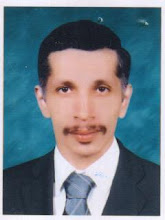 Niagara Falls might seem to be a strange place for a large and important collection of Egyptian mummies. But it was not quite so strange in the late 1850's, when Colonel Sydney Barnett, the son of the Museum's founder, Thomas Barnett, went to Egypt to purchase the Egyptian antiquities that would begin the collection.
Niagara Falls might seem to be a strange place for a large and important collection of Egyptian mummies. But it was not quite so strange in the late 1850's, when Colonel Sydney Barnett, the son of the Museum's founder, Thomas Barnett, went to Egypt to purchase the Egyptian antiquities that would begin the collection.Since Napoleon's attempt to conquer Egypt in 1798, Egyptian mummies, coffins, statues and jewellery had been entering Europe and North America, inspiring artists and architects. Many cemeteries in the first half of the nineteenth century were built with Egyptian style gates. The decipherment of Egyptian hieroglyphs by Jean Francois Champollion in 1836 excited the Western world. American writers and philosophers such as Ralph Waldo Emerson, Henry David Thoreau, and Edgar Allen Poe, wrote on Egyptian themes. The Crystal Palace display in London in 1851 had whetted the public's appetite for even more Egyptian materials. In Niagara Falls, two monuments had already been constructed in Ancient Style.
First, between 1850 and 1851, E.W. Serrell built a suspension bridge over the gorge at Lewiston, with Egyptian style pylons. Then, between 1852 and 1853, J.A.. Roebling (whose son, Washington Roebling, would later build the Brooklyn Bridge) spanned the Niagara River below the falls with a double-level suspension bridge built in Egyptian style. What could have been more reasonable than to create a dazzling display of Ancient Egyptian materials in the beautiful Niagara Falls Museum on Table Rock overlooking the Falls, in sight of the Egyptian pylons of the bridge?
During the late 1850s, negotiations began, and by 1861, Colonel Barnett, with the help of Canadian doctor James A. Douglas, was able to bring the first six mummies from Egypt. Dr. Douglas' help was required to circumnavigate Mehmet Ali's 1835 ban on export of Egyptian antiquities. Enforcement had been erratic, but after 1861, under the direction of Auguste Mariette, the Egyptian Museum in Cairo had been established, and Mariette was determined to keep Egyptian antiquities in Egypt Colonel Barnett's assemblage was one of the last private collections to leave Egypt.
The coffins reached Canada in 1861, by which time the American Civil War had begun (The first shots had been fired at the Egyptian style bridge in Harper's Ferry!) People in the USA and Canada were increasingly concerned with contemporary issues. Nevertheless, the mummies were formally unwrapped by William Rooth in the presence of two local businessmen, Charles Patten and George Simpson. As yet, no notes from those proceedings have surfaced. What interesting reading they would make today!
Few people in North America could read hieroglyphs well in 1860, so it is not surprising that the names on the coffins were misread, and the mummies mislabelled Antiquities dealers in Egypt were not always scrupulous, and coffins were sometimes sold with bodies that did not belong in them, and with exaggerated stories about the historical identification of the mummies. The most presentable mummy in the Niagara Falls Museum, a fine gentleman with red hair and beard, has long been advertised as "General Ossipumphneferu, North America's oldest and most perfectly preserved mummy." Alas, he is neither, but his true story, and that of the other mummies and coffins, is just beginning to be known.
Anthropological studies of the bodies were done by Dr. Wolfgang M. Pahl of the Tubingen Institute of Anthropology, under the direction of Egyptologist Dr. Arne Eggebracht in 1985 At that time, the mummies were all x-rayed, some, to prevent damage, still in their coffins Laparoscopy was used to determine the state of internal organs, but no tissue samples were taken.
The coffins are being studied by Gayle Gibson, an Egyptologist who teaches at the Royal Ontario Museum, and who is President of the Society for the Study of Egyptian Antiquities.
Some of the recent findings about the Niagara Falls mummies and coffins are outlined below The purchaser of this unique collection will have the pleasure and privilege of completing these studies and bringing these forgotten mummies into the modern world.
On display since 1861, the Niagara Falls mummies have sometimes resided on the Canadian side of the River, and sometimes on the American. They have become part of the mystique of the Falls. A visit to see the natural wonders of Niagara is incomplete without a side trip to the Museum to say hello to these ancient witnesses.
I have endeavoured to establish an institution commensurate with the importance of the young but great country to which any Canadian might point with pride, an institution that should rank with other great institutions of the world, although they are government affairs raised and supported by whole nations while mine is only the effort of a humble individual."
- Thomas Barnett, Founder, Niagara Falls Museum
Thomas Barnett was born in 1799 in Birmingham, England and founded the Niagara Falls Museum in 1827. He died in 1890




